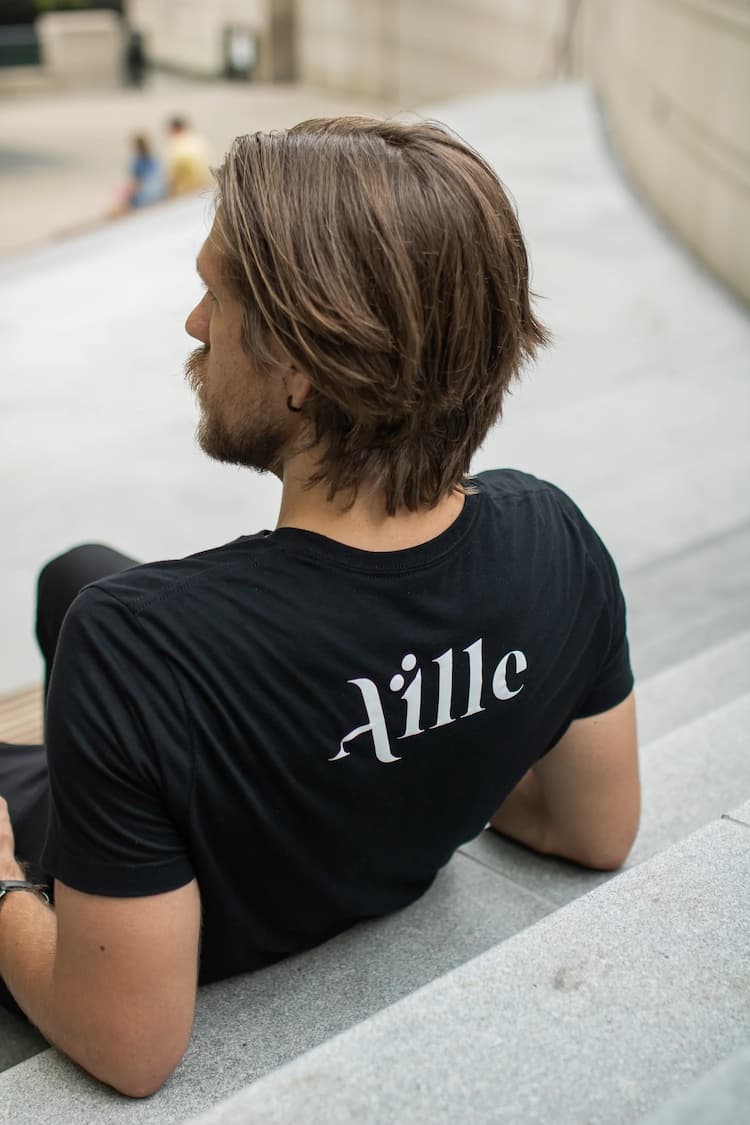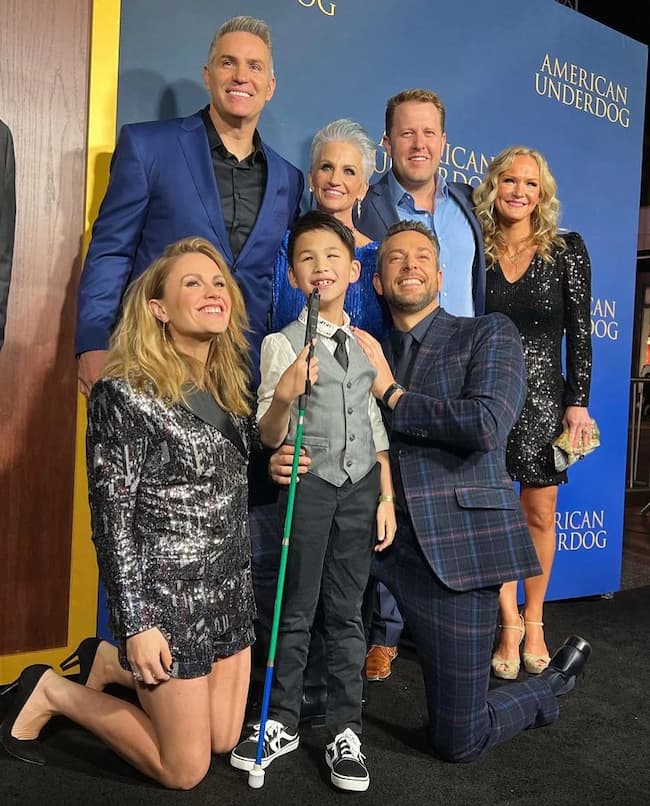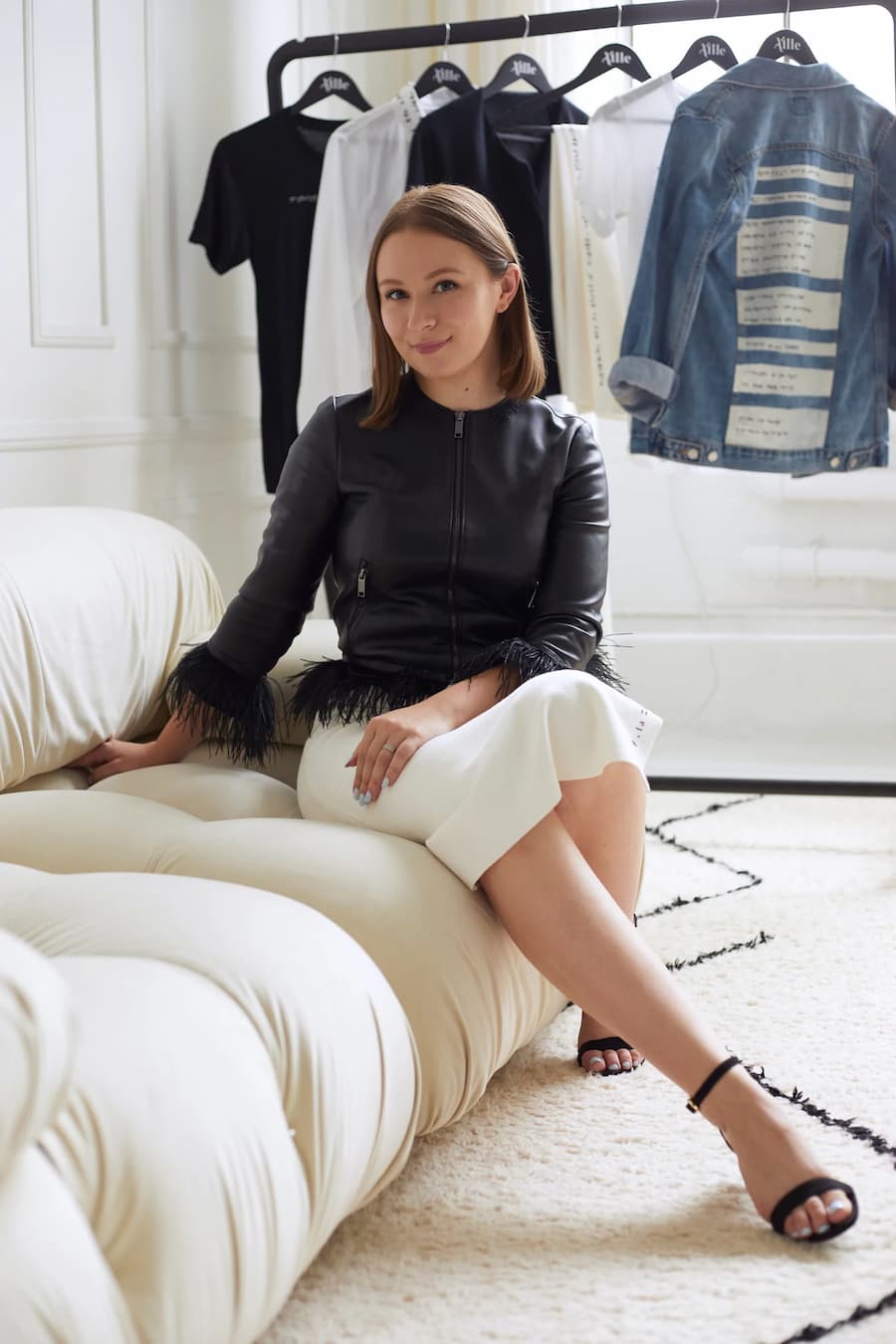A fashion statement you can feel

More Than a Name
Aille Design (pronounced: eye)
Our brand name comes from the French verb Aller which means "to go" or "to move forward". We believe inclusivity is the direction the fashion industry needs to move forward in and we're ready to help lead the change!
The pronunciation of our name alludes to the personal "I" since our products help to empower and increase independence, as well as the physical "eye" since braille provides a source of vision and understanding.
Did you know? The two dots in our logo are the braille character for the letter "i". It represents the importance of braille while helping you remember the pronunciation of Aille.

The Design Process
Community Collaboration
Our garments are created in a process called co-design where we work alongside a diverse team of sighted and non-sighted individuals consisting of braille readers, fashion stylists, and disability advocates.
Together, we create fashion-forward products that empower and celebrate inclusivity, while helping to reduce disability stigmas and educating about the importance of accessibility. These diverse perspectives are what create change and innovation.

How We Started
University Research Project
Now known as "The Braille Fashion Designer," Alexa Jovanovic first began creating braille fashion as a research project in university where she was taught the importance of disrupting fashion industry norms through innovative design thinking and the co-design process.
Alexa built strong relationships with local blind and visually impaired individuals and together they discussed everything from shopping, clothing trends, and closet organization, to society’s misconceptions of what it means to “look and feel” blind.
The first braille prototype we created was the white collar shirt with black braille beadwork that is pictured above.

Our Mission
The Future is Inclusive
We are committed to producing a high quality fashion product with a social impact that empowers communities and creates equal opportunity. Our mission is to establish a new standard of inclusion and to build awareness about how other companies can effectively implement this new standard to create a better future for all.
We want to help normalize the inclusion of individuals with disabilities in all areas of fashion, from clothing design and modeling to accessible shopping environments and digital spaces. Diversity includes disability and it’s time our fashion industry does as well.
In December 2021, the Hollywood red carpet witnessed its first braille fashion design. What an amazing moment for disability representation!
It was an absolute honour to work with visually impaired actor Hayden Zaller and his mom Shannon Zaller to create a custom braille dress shirt for the premiere of Hayden's first movie American Underdog: The Kurt Warner Story. The incredible cast and team behind the movie include former NFL superstar Kurt Warner who is played by actor Zachary Levi, and his wife Brenda Warner who is played by actress Anna Paquin.

Q+A with Alexa
Founder of Aille Design
Q. When and how did you fall in love with design?
A. "Fashion has been a large part of my life ever since I was five years old playing dress up in my mom’s closet. I was drawn to feathers, costume jewellery, beaded clothing and high heels. By the time I was ten I knew I wanted a career in fashion and aspired to work for a magazine. I went to university to study fashion communication and that’s where everything changed. I took courses on the importance of diversity and inclusion in fashion and for the first time, I understood the problems in our industry. I fell in love with design all over again, but this time, in a completely new way. I saw design as a way to help others and create social change."
A. How did you come up with the idea for Aille Design?
Q. "I was out shopping and saw this beautiful beaded jacket. I had an “aha” moment and made the connection between the similarity in size of small beads and braille, then questioned why this beaded jacket couldn’t have a function beyond its aesthetic value. I instantly imagined all of the beads being rearranged to create functional messages in braille that were fully legible and described the item’s colour, textile, fit and care content. It was an opportunity to create fashion that could increase independence and empower an entire community that’s been completely overlooked and misrepresented. I went home and did a lot of research. Not only did braille fashion not exist, there was also little to no information available on individuals with disabilities as consumers, let alone consumers of fashion. I built strong relationships with local blind and visually impaired individuals and we discussed everything from shopping, clothing trends and closet organization, to society’s misconceptions of what it means to “look and feel” blind. Together, we transformed the research into Aille Design."
See something different in your inbox
Join the Braille Fashion Movement!

